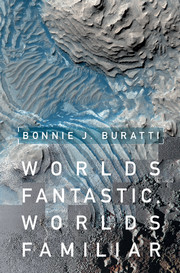Book contents
- Frontmatter
- Dedication
- Contents
- Acknowledgments
- Introduction
- 1 Mercury: The Hottest Little Place
- 2 Venus: An Even Hotter Place
- 3 Mars: The Abode of Life?
- 4 Asteroids and Comets: Sweat the Small Stuff
- 5 Galileo's Treasures: Worlds of Fire and Ice
- 6 Enceladus: An Active Iceball in Space
- 7 Titan: An Earth in Deep Freeze?
- 8 Iapetus and its Friends: The Weirdest “Planets” in the Solar System
- 9 Pluto: The First View of the “Third Zone”
- 10 Earths Above: The Search for Exoplanets and Life in the Universe
- Epilogue
- Glossary
- Index
- Plate section
10 - Earths Above: The Search for Exoplanets and Life in the Universe
Published online by Cambridge University Press: 24 March 2017
- Frontmatter
- Dedication
- Contents
- Acknowledgments
- Introduction
- 1 Mercury: The Hottest Little Place
- 2 Venus: An Even Hotter Place
- 3 Mars: The Abode of Life?
- 4 Asteroids and Comets: Sweat the Small Stuff
- 5 Galileo's Treasures: Worlds of Fire and Ice
- 6 Enceladus: An Active Iceball in Space
- 7 Titan: An Earth in Deep Freeze?
- 8 Iapetus and its Friends: The Weirdest “Planets” in the Solar System
- 9 Pluto: The First View of the “Third Zone”
- 10 Earths Above: The Search for Exoplanets and Life in the Universe
- Epilogue
- Glossary
- Index
- Plate section
Summary
For a few short moments in my life I thought I had something to teach the Teacher of the Dalai Lama. I was in my fourth year of graduate school at Cornell, settling in on my PhD thesis topic to understand what the surface of Europa is like. I was busy analyzing some Voyager 2 images of the surface of Europa in the Spacecraft Planetary Imaging Facility (SPIF). The Teacher of the Dalai Lama was coming to Cornell to see Carl Sagan, and he wanted a little tour of SPIF. Since I knew a lot about SPIF – I practically lived there at that time – Sagan had tasked me with giving the tour. Enrobed in cascades of maroon and gold, the ethereal monk glided into SPIF with an entourage of intimidating British interpreters, scholars, and disciples. I thought the Teacher would share my excitement about this ice world in space. I told him how smooth the surface was, how there was probably an ocean beneath its cracked icy surface, and – jokingly – that it might be fun to ski on Europa. I had heard that the Dalai Lama had a sense of humor, but his teacher apparently not so much. He listened politely to my lecture, but he looked at me sternly after I had finished, and he said (at least his interpreter said): “There are many worlds in this Universe that you cannot even envision.”
The Teacher was of course correct, even in the scientific sense. At that time, not a single planet outside our Solar System had been discovered, but we thought there must be billions. Exoplanets, or extrasolar planets – planets around other stars, and extrasolar systems – planetary systems around other stars – were hypothesized to not only exist but to abound in the Universe. A famous set of images taken by the Hubble Space Telescope, the deep field surveys, drives home the immensity of our Universe and the possible number of worlds within it. Figure 10.1 shows the Hubble Ultra Deep Field survey, constructed of hundreds of images with a total exposure time of nearly one million seconds and covering one 13-millionths of the sky.
- Type
- Chapter
- Information
- Worlds Fantastic, Worlds FamiliarA Guided Tour of the Solar System, pp. 205 - 223Publisher: Cambridge University PressPrint publication year: 2017



